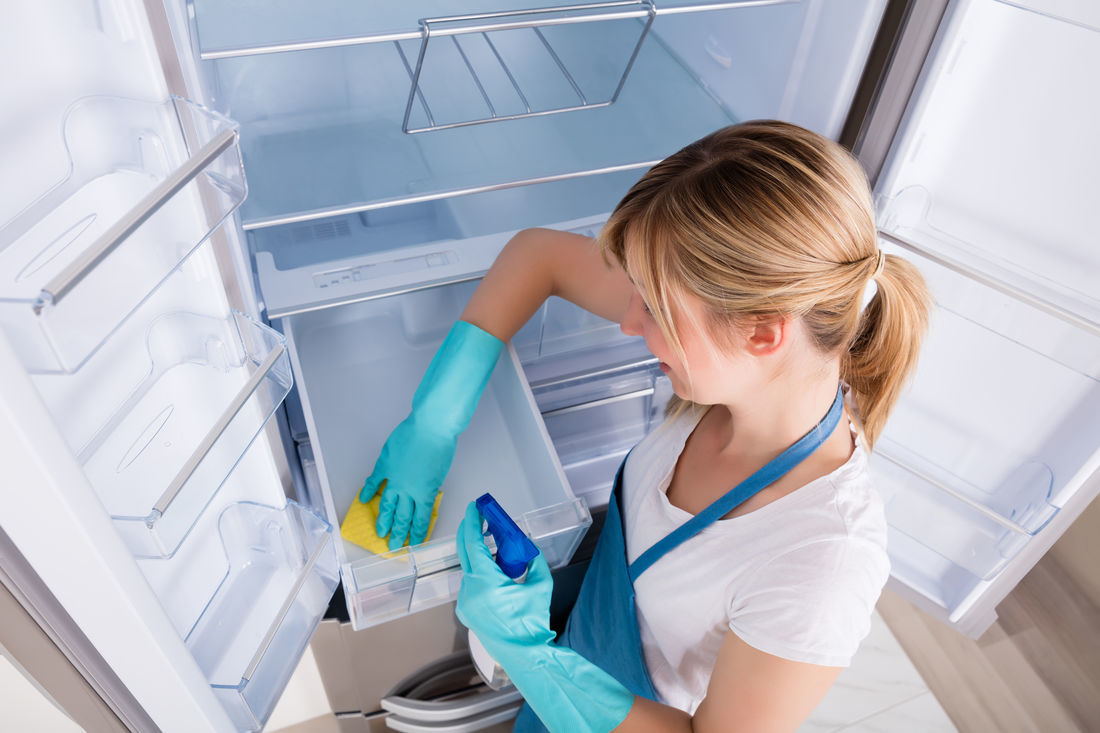It doesn’t matter if your fridge often resembles a feasting ground for a pack of wild animals or if you regularly wipe down its door and shelves: it’s always a good idea to give your refrigerator a good thorough cleaning at least once a year (with spring serving as a great time to remember doing so!).
Why?
Because mould and bacteria can poison your food, yourself, and those you serve food to.
Cleaning your refrigerator doesn’t have to be a lengthy and arduous task. We recommend checking your fridge manual before you get started as cleaning instructions may vary from one fridge to another.
But in general, here’s what you’ll need:
- Coolers/freezer/a secondary fridge for storing contents
- Cleaning cloths (microfibre work well)
- Sink of warm and soapy water
- Bucket of soapy water
- Old towels
- Soft brush
- Baking soda
- Garbage can
- Mild all-purpose cleaner
- Vacuum cleaner
Before you begin
Your refrigerator is connected to an electrical outlet. Make sure it is unplugged before you start.
When it comes to the refrigerator’s contents, do yourself a favour and toss out any expired food items (recycling or the rubbish bin). Everything else can be placed in coolers, though keep meat separate to prevent any cross-contamination.
Inside the refrigerator
Here is where most of the work will likely need to be done. Start by taking out the shelves and baskets, and bathe them in the sink of soapy water. Rinse well, let them air dry on old bath towels, and clean the interior of the fridge with a microfibre cloth as you wait for the shelves and baskets to dry. Rinse and repeat.
If there are any sticky spills on the inside, sprinkle the spot with some baking soda and scrub it with your microfibre cloth. Wipe the area dry once this area is cleaned.
Outside the refrigerator
Start with the gasket, dipping a soft brush into your bucket of soapy water and then cleaning the gasket seal. Rinse with a damp, clean cloth and use a brush to scrub at the hinges. Wipe dry.
Next move along to the fridge door. Depending on your fridge, wipe down with a damp mircrofibre cloth or spray it down with a mild all-purpose spray, starting from the top and moving to the bottom and working the underside of the handles. (Always remember to check the manufacturer’s instructions first before using any commercial cleaning products on your fridge.)
Move on to the coils with your vacuum (depending on the model, these may be on the back or the bottom). Use your vacuum’s dust attachment to suck away any built-up dust and debris.
Finish the job by dusting the baseboard and wall behind the fridge. If needed, mop the floor underneath it with that microfibre cloth and soapy water. Use baking soda for stubborn spills.
After the clean
Set the fridge back in its place and place the shelves and baskets inside. After plugging your fridge back in, allow it to cool for at least one hour before putting food back inside.
Not sure what your fridge needs?
Melbourne Fridgeworks services all major brands of refrigerators and freezers throughout the Melbourne metropolitan area! For advice on how to service or repair your refrigerator, we welcome you to contact us online or to give us a call at 0413 740 871.

